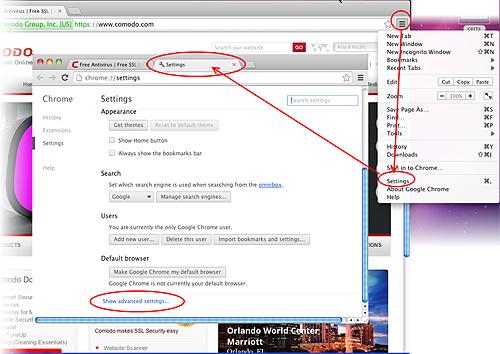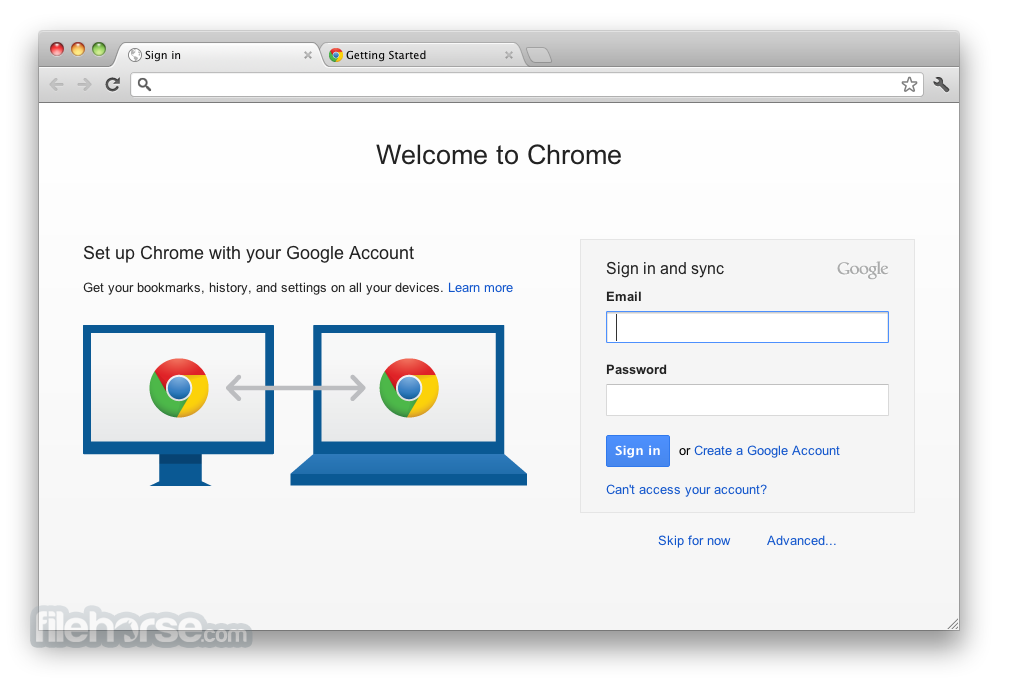Chrome Browser For Mac
To set up Chrome Browser on Mac, you create a configuration profile and deploy it using your preferred mobile device management (MDM) tool. The Chrome Browser for the enterprise bundle file contains a sample file that you can copy and customize for your own use.
I picked up my very first MacBook recently. The first thing I did? Download and install Google Chrome for MacOS. I am currently using Google Chrome on MacOS Sierra, the latest version. This is a guide to help you download, install and set up Chrome on your Apple MacBook or MacBook Air.
Chrome Browser For Mac Os 10.5.8
In this guide, we will discuss:
- Downloading and installing Google Chrome
- Setting up Chrome on MacOS
- Tips and Tricks for Chrome on MacOS
- Keyboard Shortcuts for Google Chrome on MacOS
- Beta, Dev and Canary versions of Chrome for MacOS
Download Google Chrome for MacOS
To download Google Chrome for your Mac, go to google.com/chrome. The website will automatically detect the operating system that you are currently using and give you the correct file, that is the installer for your Mac.
After you download the installer dmg file, double click the file to start installing Chrome. The installer will now extract the Chrome browser from the file you downloaded and show you the following screen:
Drag the Google Chrome logo to the Applications folder as shown. This completes the installation. You should now be able to lunch Google Chrome from your Launchpad or Spotlight search.
Google Chrome or Safari, Which Browser Is Good?
Safari comes preinstalled on MacOS. It is the default browser on MacOS. Safari is a really good browser. It is highly optimized for MacOS and MacBooks. If you are still thinking which browser to use, here are a few things to consider, in favor of Chrome:
- Google Chrome comes with a lot of useful features like Chromesync.
- Extensions and Apps for additional features.
- Faster updates. Bug fixes and new features every six weeks.
Chrome Browser For Macbook Pro
Setting Up Google Chrome on MacOS
This section helps you set up Google Chrome after installing it. You will learn about signing into Chrome, adding it to the Dock for easy access and more.
Make Chrome Default Browser on MacOS
To make Google Chrome your default browser on MacOS:
- Go to chrome://settings
- In the “Default browser” section, click Make Google Chrome the default browser.
- If you don’t see the button, Google Chrome is already your default browser.
Keep In Dock for Easy Access


If you are going to use Google Chrome regularly, consider adding Google Chrome to the Dock. To do that, right click Chrome icon on the Dock and choose “Keep in Dock” under Options.
Sign In To Chrome
Signing into Chrome makes it easy for you to store your bookmarks, passwords and a lot of other information. Find more about Chromesync or Signing In To Chrome here.

MacOS Keyboard Shortcuts for Chrome
Here are your keyboard shortcuts for Chrome:
Chrome Browser For Mac Os 10.6.8
- Open a new window: ⌘ + n
- Open a new window in Incognito mode: ⌘ + Shift + n
- Reopen the last closed tab, and jump to it: ⌘ + Shift + t
- Jump to a specific tab: ⌘ + 1 through ⌘ + 8
- Jump to the last tab: ⌘ + 9
- Closes the current window: ⌘ + Shift + w
- Minimize the window: ⌘ + m
- Hide Google Chrome: ⌘ + h
- Show or hide the Bookmarks Bar: ⌘ + Shift + b
- Open the Bookmark Manager: ⌘ + Option + b
That should help you get started. Visit this official Help Center article for the complete list of Google Chrome keyboard shortcuts.
Chrome Browser For Mac High Sierra
Update Google Chrome on MacOS
Chrome Browser For Mac Os X
Updating Google Chrome on MacOS is easy; because you don’t have to do anything. Just like Google Chrome on other platforms like Windows and Ubuntu, the browser updates itself on Mac too. Google Chrome downloads updates in the background and installs them. You will need to restart the browser to install the update. Look for the green icon on the top right corner of Google Chrome, when you see that, go to Settings and click “Restart”